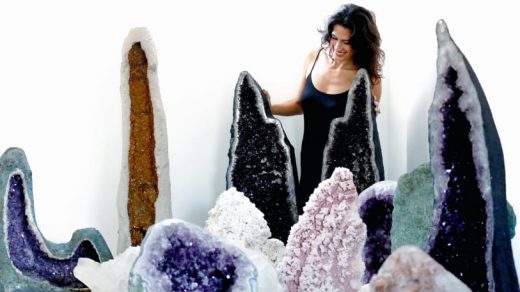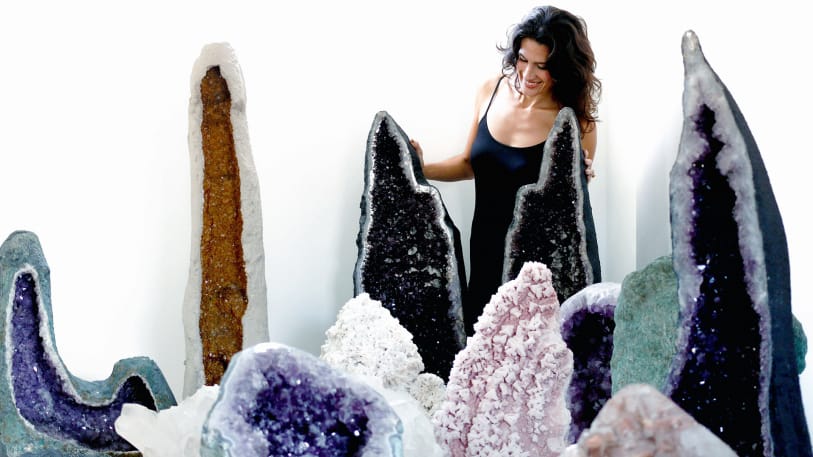Is There A Crystal Bubble? Inside The Billion-Dollar ‘Healing’ Gemstone Industry
The spirits want me to face my addiction to Sour Patch Kids.
I am sitting cross-legged on the floor of Colleen McCann’s Venice Beach home. Colleen is a shaman. Her loft is filled with crystals, many of which are organized into parallel lines to my left and right, as if I’m stationed in the middle of a spiritual runway. Colleen sits facing me, and between us, she’s fanned out a deck of Tarot cards, face down. I pick five. Colleen closes her eyes and quietly summons the spirits in the room.

The spirits are supposed to judge my career choices, which is McCann’s specialty: using quartz, citrine, black tourmaline, and other chunks of minerals for what she calls “intuitive business building.” With assistance from those in the great beyond, she helps CEOs, executives, and Silicon Beach professionals make decisions about their business just by, as she puts it, “reading their energy.” She weighs in on everything from org charts to investment opportunities to redesigning company logos or mission statements.
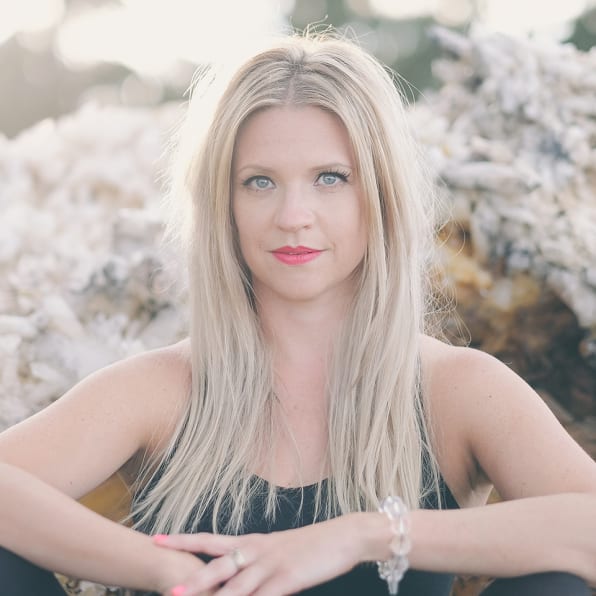
“These crystals are a conduit for messaging,” she says.
I pick up a handful of multicolored stones, blow on them like they’re dice, and hand them to McCann. She blows on them too and recites a blessing that’s rooted in African shamanism. Then she closes her eyes again and meditates.
Before the spirits can tell me if I have a future as a billionaire entrepreneur, they take aim at my daily 3 p.m. habit—the one in which I consume a king-size pack of Sour Patch Kids in one sitting.
“What’s up with what you’re eating?” McCann asks. “They say there’s something weird you’re doing every day at a certain time.”
I confess to the power that sugary gelatin holds over me. McCann nods, signaling that she and her ghostly helpers are already aware. She says they understand the temptation (duh, it’s delicious), but they want me to knock it off so that I might free my soul from the shackles of high-fructose corn syrup and reach my full potential as a green juice-drinking grownup.
The scenario might inspire eye rolls, belly laughs, or heavy side shade, but for a growing number of consumers, crystals are no joke. The gemstones have been used throughout history, reaching back to ancient Egyptian culture, for their supposed therapeutic and beautifying powers. Now the glistening rocks once exclusively associated with covens and Stevie Nicks videos are flourishing in a massive mainstream business market.
McCann is booked months in advance, perhaps benefitting from the 40% increase in Google searches for “crystal healing” in the last four years. “Crystal shops near me” queries have spiked 35% since 2013, and to that end, nearly a dozen new crystal retail outlets have opened up in New York and L.A. in the past year. Even Target sells the rocks. Buoyed by the public’s increasing appetite for all things wellness and alternative medicine, the crystal fixation has infiltrated giant industries like beauty, interior decor, and everyday home goods. Savvy collectors are opening galleries that sell many millions of dollars’ worth of crystals a year.
In short, pretty rocks—many of them just like the ones you might have collected as a kid—can mean big bucks.
Because the crystal business is so varied and lacks a centralized governing agency, it is difficult to assign a fixed value to it. But expert collectors and dealers like Daniel Trinchillo make confident estimates. “This is a billion-dollar industry, easily,” says Trinchillo, who’s known as the “Indiana Jones of Crystals” for the 35 years he’s spent chasing down rare minerals all over the world. It was science, not mysticism, that first sparked his interest in the gems, and over the course of his career, his client roster has grown from geologists and naturalists to high rollers including fashion scion Chris Burch (of Tory Burch LLC) and Hunt oil heiress Lyda Hill. “I curate collections for billionaires,” Trinchillo says. The late Titanic composer James Horner was another top client.
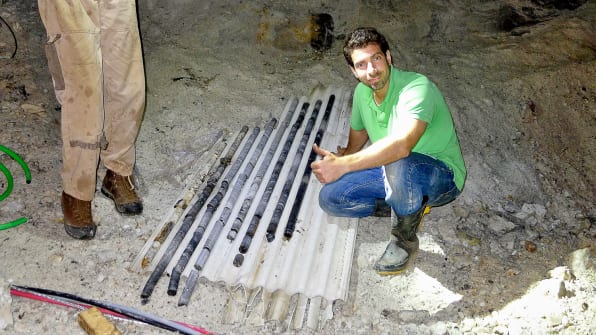
And speaking of Hollywood: Like any trend worth its (mineral) salt, the crystal craze has its bastion of celebrity acolytes. Gwyneth Paltrow, Victoria Beckham, Katy Perry, Khloe Kardashian, and Bella Hadid have all publicly sworn their allegiance to the gemstones. (Adele even attributed her performance hiccups at last year’s Grammys to the fact that she’d lost her beloved totems. “I got some new crystals now and everything’s been going well,” she later said.)
For McCann, the reason for the boom is simple. “What we’re doing right now as a people isn’t working,” she says. Our fraught political climate, work overload, and tech dependency, she says, leave people “sad, scared, or nervous.” She believes crystals can “help people get back on track.” The practice of just sitting down and touching an element that comes from the earth, she says, produces a positive, calming effect.
And for the people building businesses around them, a pleasing ka-ching sound.
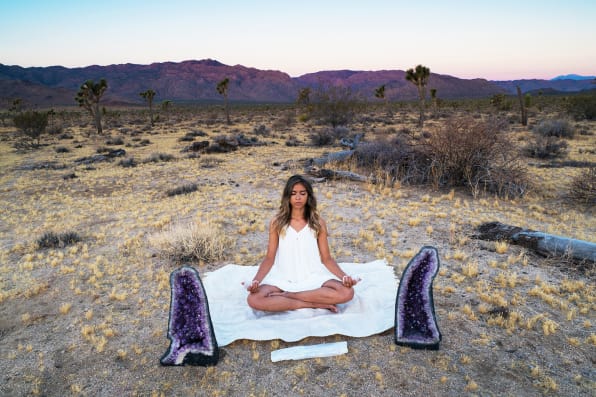
The Business Of Crystals
McCann considers herself a “spiritual influencer.” Everything she does is built on the idea of “crystal education,” which looks at how certain crystals can address certain ailments and serve specific personalities. According to belief, moonstone invokes creativity, citrine boosts energy, and amethyst treats addiction. As part of the $ 250 package I selected when I sought her services, she “prescribed” me a few amethysts. McCann also sells an $ 85 starter kit bag of “magically charged” crystals on Goop, where she’s the in-house shaman. You can buy a cluster of crystals for $ 5 on Etsy or eBay, but as McCann points out, these are not curated to a person’s specific needs.
McCann sees a variety of (predominantly young and female) clients for garden-variety therapy sessions, and she might perform the occasional crystal-assisted exorcism (“You never forget your first exorcism,” she says without irony). But the strongest aspect of the two-year-old business is the “intuitive business building.” Half of her clients are business executives from L.A., New York, Asia, and Europe.
“I may close my eyes and say, ‘Hey, you’re thinking of starting a new division,’ and they say, ‘How did you know that?’” McCann explains. “Or I’ll say, ‘I see a girl with red curly hair coming in—that’s the girl you need to hire.’”
She charges between $ 100-$ 1,500 per session and has seen her business triple in growth over the last year alone. Crystals are not a mere “trend,” she says. They are a “movement.”
“As a collective, we’re starting to reawaken to practices that have been here for thousands of years.”
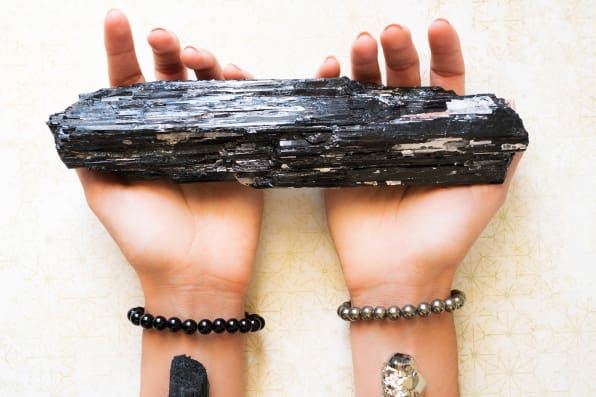
Similar to McCann, Heather Askinosie and Timmi Jandro have watched their business nearly double in the past few years. As the owners of Energy Muse, a 17-year-old crystal e-commerce business that also has a shop in Torrance, California, they say their sales are booming again for the first time since 9/11, when there was a brief surge.
For a long time, Askinosie says, most people associated their merchandise with “witches and mystical people wearing hippie outfits.” That association may still hold, but thanks to high-profile wellness figures like the self-help guru Tony Robbins, who wears an Energy Muse necklace every day, Askinosie and her partner Timmi Jandro’s customer base has expanded. Roughly half are entrepreneurs and business executives. Clients now hail from all over the country, not just coastal cities.
“When there are dips in the financial market, we sell out of our Money Magnets bracelets,” says Jandro, referring to the $ 88 accessory that promises to “bring wealth into one’s life.” She says business increases when consumers are stressed or anxious about the news.
“Whether people are buying crystals because they think they’re pretty or because they want the energy or just putting it in their house for artwork or decor—it’s serving different purposes for different people,” Jandro says.
Soon, customers will be able to read their musings on energy and more in the book Askinosie and Jandro are writing for the New Agey Hay House Publishing.
And you don’t have to follow the incense cloud to your local new age shop to get your crystal fix. You can sign up for one of the many “crystal of the month” clubs that have served devotees and collectors for years (The Hills‘ Spencer Pratt recently launched one of his own). Or you could just take a look at some of the everyday items around you. Chances are, there are versions of these items that are crystal-enhanced.

Gem-Water, for instance, specializes in glass bottles that contain crystal filters meant to “transform ordinary tap water into extraordinary H2O,” according to the company website. The bottles range from $ 78-$ 340 depending on the crystal blend. There are also $ 60 crystal wine wands that, according to founder Anjanette Sinesio, “soften the tannins.” Sinesio began selling her products online in the U.S. late last year and has landed sales contracts with 22 luxury retailers, in addition to spas at The Four Seasons and Mandarin Oriental hotels. Big brands, she says, are discovering that “wellness from within is so big now.”
As is beauty from without. In the cosmetics industry, companies including La Prairie, Bliss, and Kora offer products mixed with quartz, and the boutique green beauty brand Herbivore Botanicals sells crystal-infused skin care products. In 2014, Herbivore Botanicals released its $ 48 Brighten Mask, formulated with crushed tourmaline sourced from Brazil. The product has taken off in the last year, outpacing the company’s other top sellers on its own e-commerce site and at Nordstrom.
Herbivore Botanicals product specialist Willie Freitas sees the popularity as a direct result of interest in crystal healing. The brand has since incorporated crystals into their marketing strategy and social media campaigns.
“People email our general inbox very often asking about tourmaline and its benefits,” says Freitas, “and whether we’re coming out with more gemstone products.” The answer is yes: More items will hit the market in the coming year.
With their glowing rainbow colors, crystals are an obvious fit for the home decor market. Plenty of people purchase the rocks to simply display in their home, but one interior design company has taken it to a whole new level (sometimes quite literally). The Cristalline, based in Los Angeles, specializes in “energetically balanced interiors and lifestyle,” which roughly translates to mixing feng shui with crystals.
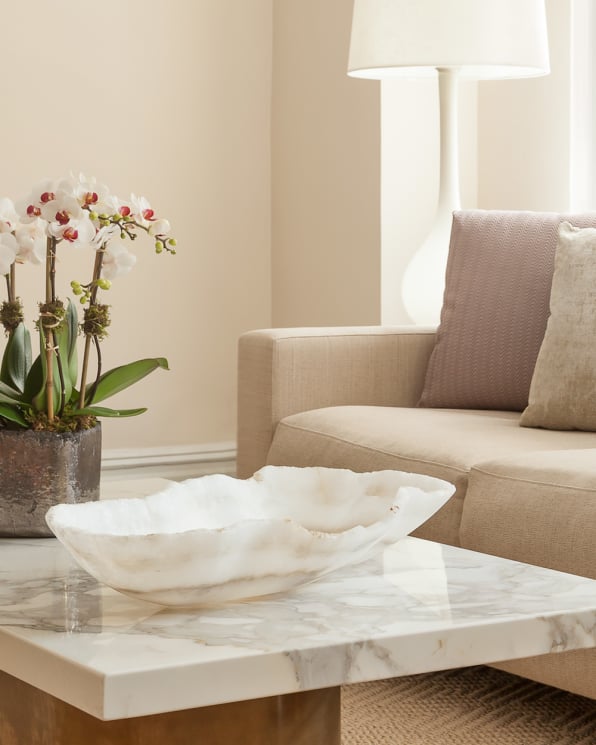
Cofounder Rashia Bell is an established interior designer who is also certified by the Crystal Academy of Advanced Healing Arts, a Los Angeles-based center that specializes in teaching crystal therapy. She incorporates crystals in subtle ways in an effort to make her interiors, as she puts it, “less hippy dippy.” The Cristalline builds custom projects that use crystals in a functional manner: light mixtures, coffee tables, even floors and walls made entirely of crystals.
Bell might suggest a layer of crystals installed underneath the floors of a home that previously housed a couple who went through a divorce, to “shift the energy of the space.” Consultations start at $ 500.
At first, Bell offered crystal fusion as an add-on service, but in the last year, clients have hired her for that specifically. She says her customer roster “easily doubled,” and that there’s been “a remarkable shift” in how crystals are perceived. Just a few years ago, when she mentioned crystals, people responded in a “hushed voice.” Now it’s all anyone wants to talk to her about.
One of Bell’s clients is Taryn Toomey, the founder and owner of the fitness craze The Class, an exercise regimen that melds together repetitive cardio movements, mindfulness, and screaming. Toomey commissioned The Cristalline for her New York studio, which now has a crystal grid beneath the floor to, among other things, balance the radiomagnetic waves emanating from the elevators. Clients aren’t aware of the sub-floor stones, but Toomey swears that, unlike participants at her L.A. location that is currently crystal-free, her New York clients can sense them, telling her, “‘Wow, it feels so good in here,’” she says. “People can feel it.”
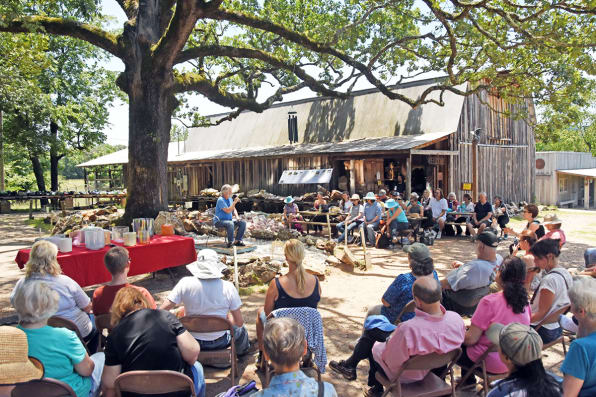
Conscious Crystals, Quality Crystals
Bell says that her stones give off such good vibes because of their quality. Like diamonds, there are a variety of crystal tiers and compositions, as well as origins. Though crystals are technically mined, the process is smaller in scale than coal or gold mining, and there are no open-pit mines that span several miles. Handheld drills and minimal blasting extract outcrops of varying size, depending on the mineral. While large-scale copper and coal mines can extract 500-600 million metric tons per year, gem mineral mines hover at about 10,000-50,000 metric tons per mine. In comparison to other mining practices, it’s low impact, which means workers are not subjected to the same environmental or health hazards.
Even so, there are clean crystal mines, where stones are sourced under ethical, green conditions. Wegner Quartz Crystal Mines in Mount Ida, Arkansas (a region that boasts one of the world’s largest deposits of quartz), is one such outfit, running on a zero carbon footprint by planting trees to offset equipment exhaust. Founded in 1981, the company attempts to counteract one of mining’s biggest environmental issues—polluting water—through settlement ponds, solar energy, and reclaiming the mined earth so that it can grow trees again. Otherwise, says founder Richard Wegner, mining “becomes a wound in the earth.”
As a business, Wegner’s is thriving. Tourism to his property has increased 10% each year for the last five years—a significant increase for a rural area with a population of 1,000. On the wholesale side, Wegner says that every week the company picks up new buyers who are interested in the ethical nature of his approach. That makes sense. This is, after all, an industry based on feel-good sentiment.
“Just like you want eggs from a happy chicken,” says McCann, who purchases clean crystals exclusively (but is currently not a client of Wegner’s), “you want crystals that came out of the earth in a happy way.”
Still, even the most conscientious miners and dealers have to grapple with the reality that crystals are not a renewable resource. Wegner is conflicted about tapping into the limited supply of the 300 million-year-old stones, but cites a Native American philosophy that holds that crystals are here to help humanity and therefore belong in our hands. When he finds himself in possession of a five-foot formation with a wholesale price tag of over $ 30,000, he insists on selling it to a party that will put it on public display, like a museum, so that many people can enjoy it.
“No more [rare] crystals are being formed now,” he says. “It’s something we need to conserve. I’d equate it to investing in fine art.”

The Fine Art Of The Crystal Trade
To a sizable group of people, buying crystals is very much on par with investing in fine art. Daniel Trinchillo regularly sells rare pieces for $ 1 million to $ 10 million, and watches as they appreciate at breakneck speed. One client acquired a blue cap tourmaline in 2011 for $ 1.5 million, then sold it within two years for $ 2.5 million. The current owner is now fielding offers around $ 5 million. The value of rhodochrosite has also skyrocketed. A piece that went for $ 20,000 in 1995 now collects between $ 200,000 and $ 400,000, or even a few million depending on the rarity.
In 2014, he took a break from excavating rocks in exotic jungles and sub-zero-degree locations in Russia to open his own gallery on Madison Avenue in New York City. Mardani Fine Minerals features collector’s items from the world’s top crystal regions, including Brazil, China, and Colombia, as well as some from Trinchillo’s own mines in Madagascar and Brazil—an investment he made because “demand is so high right now.” According to Trinchillo, the gallery makes between $ 25 to $ 40 million in annual gross sales, with profit margins varying from 20%-70%.
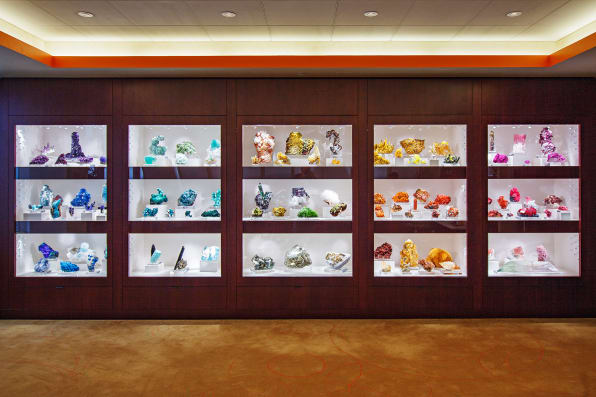
“Its a fun time to be in this industry,” he says.
Lenise Soren is a fellow traveler in the crystal business. She operates her own gallery on the other side of the country in Malibu, California—but compared to Trinchello’s Mardani, it might as well be on the other side of the universe. SorenityRocksMalibu is a new, 2,000-square-foot interactive crystal wellness gallery—the first of its kind—and performing arts sanctuary that is the physical embodiment of Soren’s deep belief in the mystical side of minerals. Opened in March, the space is a museum of crystal formations, many of them six feet tall, that look like they came straight out of Superman’s Fortress of Solitude. Inside, adults and children are encouraged to touch the dramatic rocks, some of which have price tags from $ 30,000 to several million.
Soren, a former actress who appeared in TV and movies in the early ’00s, surrounds herself with crystals at all times. She credits the stones for her excellent health (she hasn’t been sick in the last eight years) and her appearance. “[My partner and I] don’t look our age,” she says. “Even our cats don’t look their age.” She then declines to give her actual age. Her cat, however, is about five years old. He goes by Merlin the Crystal Wizard Cat.
Soren hosts a variety of events on her compound, from healing sessions for rehabilitated wolves (the canines snuggle with crystals) to crystal gong baths (meditation with gongs and crystals)—both of which I attended over a recent weekend, and both of which were packed with attendees young and old. She charges $ 30 for wellness treatments like the gong bath, which she offers twice a week. Special events like wolf therapy run around $ 150.
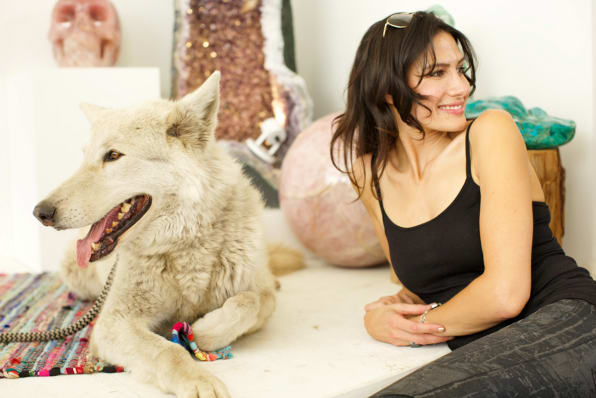
Soren’s unique gatherings have drawn local celebrities, but she was well known within Los Angeles spiritual circles long before she opened her center, the rare collector who has made a career out of tapping into every imaginable sector of crystal worship. She’s been a dealer for six years and estimates that she’s sold several million dollars’ worth of stones since then. One of her most recent sales went to a client in Asia for more than $ 1 million. (She offers a loaner program for the less deep-pocketed.)
Soren is also Restoration Hardware’s “crystal designer,” which means she places stones throughout the company’s stores nationwide to “shift the energy” inside. As a “mineral therapist,” she guides corporate clients including The Gerber Group on how to rework their office spaces. She even manages clients’ “crystal investment portfolios,” helping them navigate the rapid appreciation of some of the rarest crystals on earth.
Like Soren, Energy Muse’s Heather Askinosie and her partner have clients who buy crystals primarily for the investment opportunity, with some of them seeing the value of their stones increase five-fold in a single year. She mentions one couple who invests in crystals in place of an IRA. And an increasing number of their Silicon Valley clients, she says, will spend thousands for a quarter-size piece of one particular rock: meteorites.
“Those are selling for $ 5,000—for a chip,” Askinosie says. “It’s big business . . . [Our inventory] is gone within 24 hours.”

Skepticism And A Crystal Bubble?
So yes, crystals are glistening shards of commercial opportunity right now. But is this a bubble? If so, how long before it bursts (or rather, shatters)? Will newer devotees grow tired of their gem silica and celestite geode and move on to something else? Will they stop believing in the otherworldly capabilities of these minerals?
It’s not as if the medical and science communities have ever given credence to claims of healing powers. A 1997 study by Professor Christopher C. French, head of the Anomalistic Psychology Research Unit at the University of London, concluded that the sensations people report when handling crystals were nothing more than the power of suggestion. He warns that people should never rely on these stones for serious medical concerns. “There is simply no way that they could work beyond a placebo effect and no evidence that they do,” French says via email.

Still, he doesn’t consider the belief to be particularly noxious. “Generally, crystal healing advocates probably don’t do a great deal of harm,” French says. People who put their faith (and dollars) in the stones, he adds, “may even gain some small psychological benefit.”
And maybe that’s enough. When I ask Colleen McCann if crystal therapy is just a case of placebo effect, she is cagey, replying, “There are many ways to skin a cat.”
Trinchillo thinks if there is a bubble, it’s a young one, years away from popping. “The best objects are still so difficult to acquire,” he says. “[These crystals] are treasured by collectors, and there seems to be no end in sight as to what they’re willing to pay to acquire.” Putting his money where his mouth is, Trinchillo plans on opening five new Mardani Fine Minerals locations over the next few years.

Soren, too, is expanding. Accustomed to skeptics, she laughs them off, emphasizing that naysayers won’t prevent her from opening more galleries in L.A., as well as New York City and Dubai, in 2018. In her mind, a crystal bubble and a long-term crystal movement aren’t mutually exclusive.
“It’s both: It is trending and it’s here to stay,” she says. As the purring, five-year-old Merlin the Crystal Wizard Cat rubs up against a quartz 10 times his size, she concludes, “Crystals were here before us, and they’ll be here after us.”
(90)

